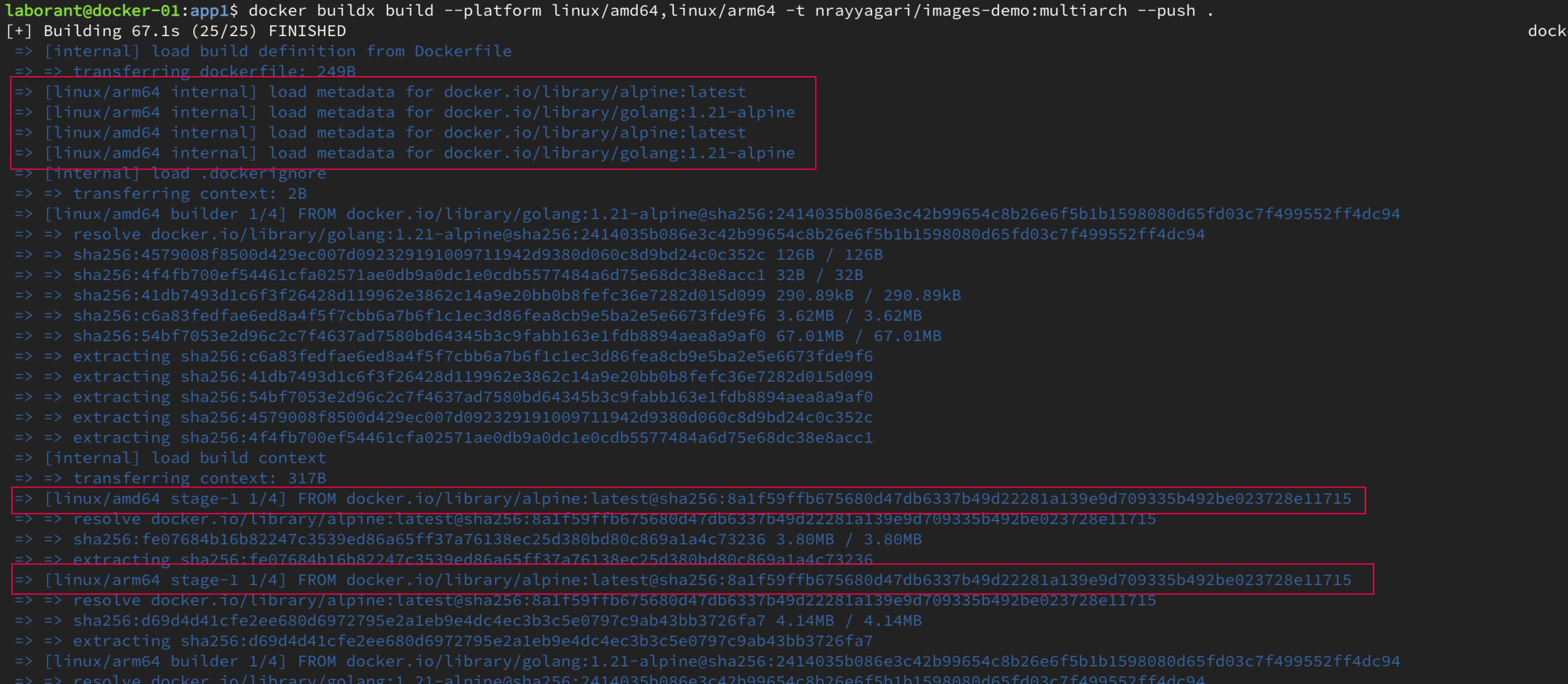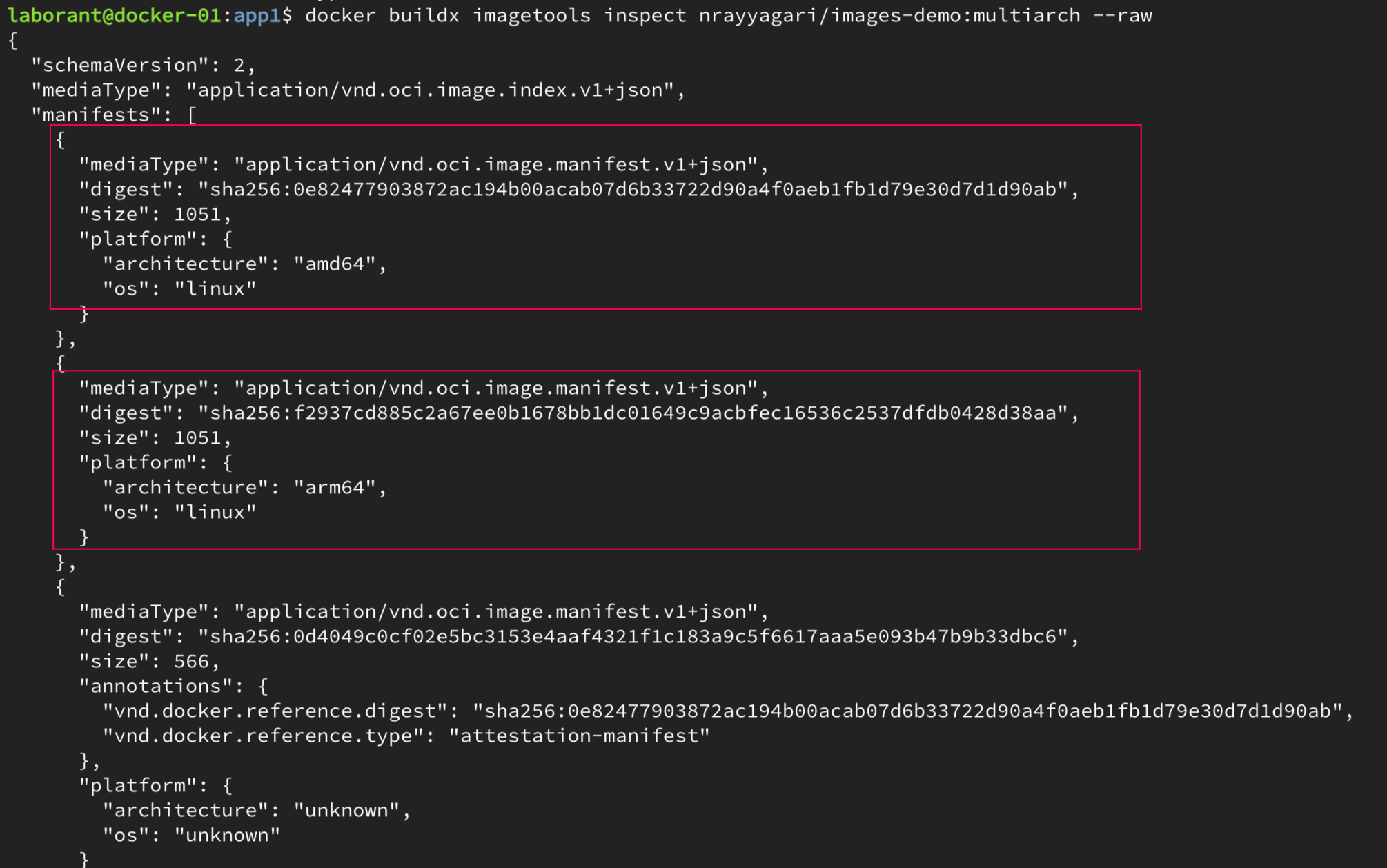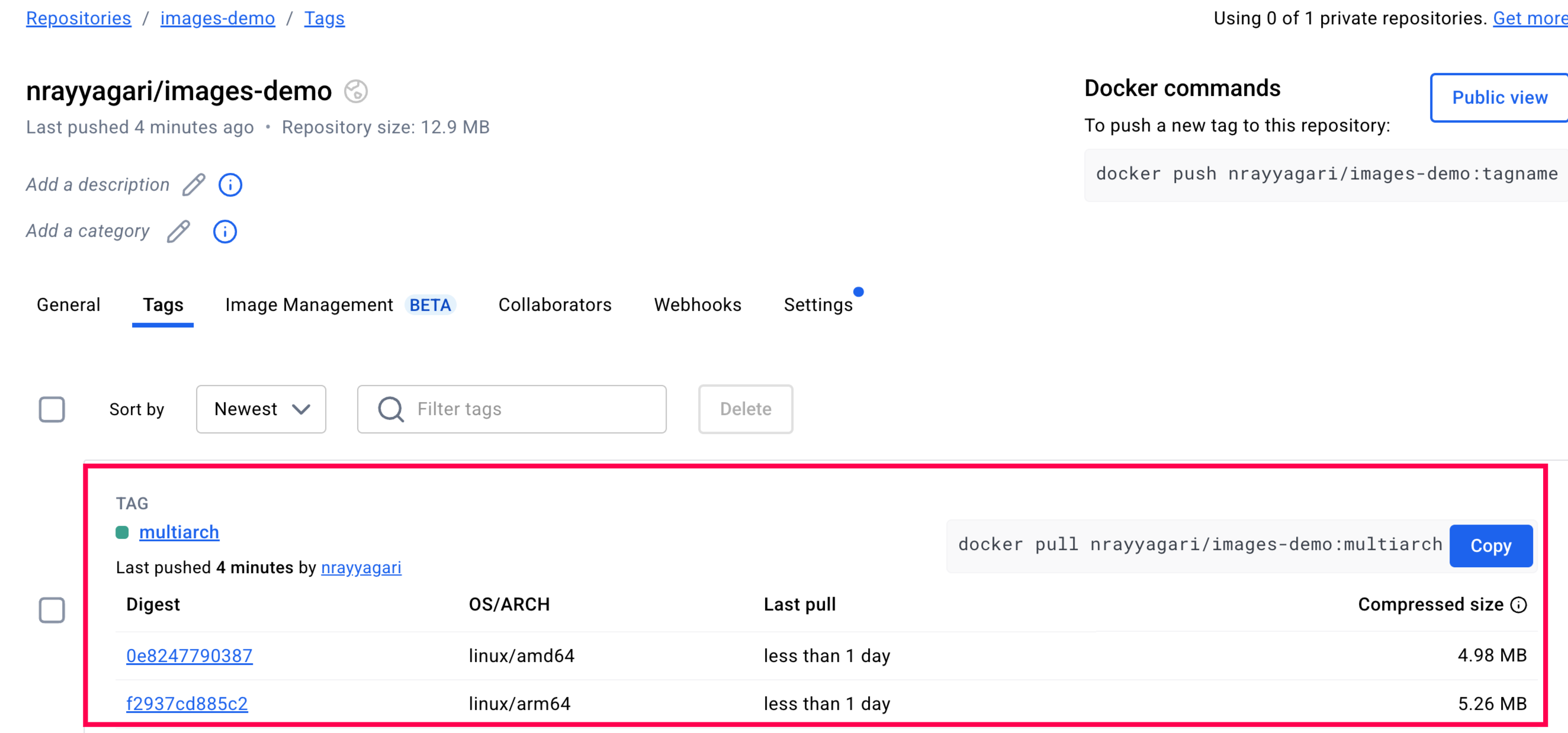Introduction
Docker images have a hidden characteristic that most developers don’t think about until it bites them: they’re built for specific processor architectures. When you run docker build, you’re creating an image that works on your current architecture - but what happens when that image needs to run somewhere else?
ARM-based servers like Apple M1 and AWS Graviton instances are becoming mainstream due to their superior power efficiency and cost-effectiveness - AWS says that Graviton3 delivers up to 25% better price-performance than comparable x86 instances. This architectural shift makes multi-arch compatibility essential.
Let’s explore this through practical demonstration and understand how multi-architecture images solve a fundamental compatibility problem in container deployments.
Demonstrating the Single-Architecture Problem
To understand multi-arch images, let’s see the problem they solve through practical demonstration:
1. Create a Test Application
Go application that shows architecture:
// main.go
package main
import (
"fmt"
"runtime"
)
func main() {
fmt.Printf("Hello from %s/%s!\n", runtime.GOOS, runtime.GOARCH)
fmt.Printf("This process is running on: %s\n", runtime.GOARCH)
}
Dockerfile for the application:
FROM golang:1.19-alpine AS builder
WORKDIR /app
COPY main.go .
RUN go build -o app main.go
FROM alpine:latest
RUN apk --no-cache add ca-certificates
WORKDIR /root/
COPY --from=builder /app/app .
CMD ["./app"]
2. Build Single-Architecture Image
- Build command:
docker build -t myapp:single-arch . - Inspect architecture:
docker image inspect myapp:single-arch | grep -i arch - Result: Image built specifically for
amd64(x86_64) architecture
3. Demonstrate the Mismatch Problem
- Run on ARM system:
docker run myapp:single-arch - Output shows warning:
WARNING: The requested image's platform (linux/amd64) does not match the detected host platform (linux/arm64/v8) and no specific platform was requested Hello from linux/amd64! This process is running on: amd64
The application runs, but through emulation. This comes with significant performance penalties - CPU-intensive workloads can see performance degradation due to instruction translation overhead. When Docker runs a mismatched architecture image, it either uses emulation (with performance penalties) or fails, forcing a choice between compatibility and performance.
Building Multi-Architecture Images
Multi-architecture images solve this by packaging multiple architecture variants under a single image tag.
Step 1: Set up Docker Buildx
- Check existing builders:
docker buildx ls - Create multi-platform builder:
docker buildx create --name multiarch-builder --driver docker-container --use - Bootstrap the builder:
docker buildx inspect --bootstrap
Why docker-container driver? The
docker-containerdriver is needed because it provides emulation capabilities for cross-platform builds, allowing you to build ARM64 images on AMD64 hosts and vice versa.
Step 2: Build for Multiple Architectures
docker buildx build \
--platform linux/amd64,linux/arm64 \
-t myapp:multiarch \
--push .
What this command does:
- ✅ Builds same Dockerfile for both AMD64 and ARM64
- ✅ Creates separate complete images for each architecture
- ✅ Packages them under one tag with manifest list
- ✅ Pushes everything to registry

Understanding the Registry Structure
How Multi-Arch Images Are Stored
Inspect the structure:
docker buildx imagetools inspect myapp:multiarch

Registry Components
-
Manifest List (OCI Image Index)
- Single entry point for the multi-arch image
- Contains references to individual architecture manifests
-
Individual Manifests
- One manifest for each architecture (AMD64, ARM64, etc.)
- Each contains layer information for that specific architecture
-
Different SHA256 Digests
- Unique identifier for each platform-specific image
- Ensures integrity and allows for efficient caching

Running Multi-Architecture Images
The Same Command, Different Results
Run the same command on different architectures:
docker run myapp:multiarch
Results by Architecture
On ARM64 system:
Hello from linux/arm64!
This process is running on: arm64

On AMD64 system:
Hello from linux/amd64!
This process is running on: amd64

How Automatic Selection Works
- Docker fetches the manifest list from the registry
- Selects the matching architecture based on the host platform
- Downloads only the relevant layers for that architecture
- Result: Native performance without emulation overhead
Limitations
When Multi-Arch Images Don’t Work
- ❌ Applications with proprietary x86-only dependencies
- ❌ Legacy applications with hardcoded architecture assumptions
Resource Costs to Consider
- ⏱️ Build time increases 2-4x (building for multiple architectures)
- 💾 Registry storage increases proportionally (separate images per architecture)
- 🔍 Each architecture variant requires separate vulnerability scanning
GitHub Actions CI/CD Pipeline Integration
Example workflow for automated multi-arch builds:
- name: Build multi-arch
uses: docker/build-push-action@v3
with:
platforms: linux/amd64,linux/arm64
push: true
tags: myapp:latest
Key benefits:
- ✅ Automated builds on every push/PR
- ✅ Consistent multi-arch image generation
- ✅ No manual intervention required
Conclusion
Multi-architecture Docker images solve the architecture compatibility problem by packaging multiple variants under a single tag with automatic selection. The trade-off between build complexity and runtime performance becomes worthwhile as ARM-based infrastructure becomes mainstream.
The fundamental shift: from “build once, run anywhere with emulation” to “build for everywhere, run natively anywhere.”